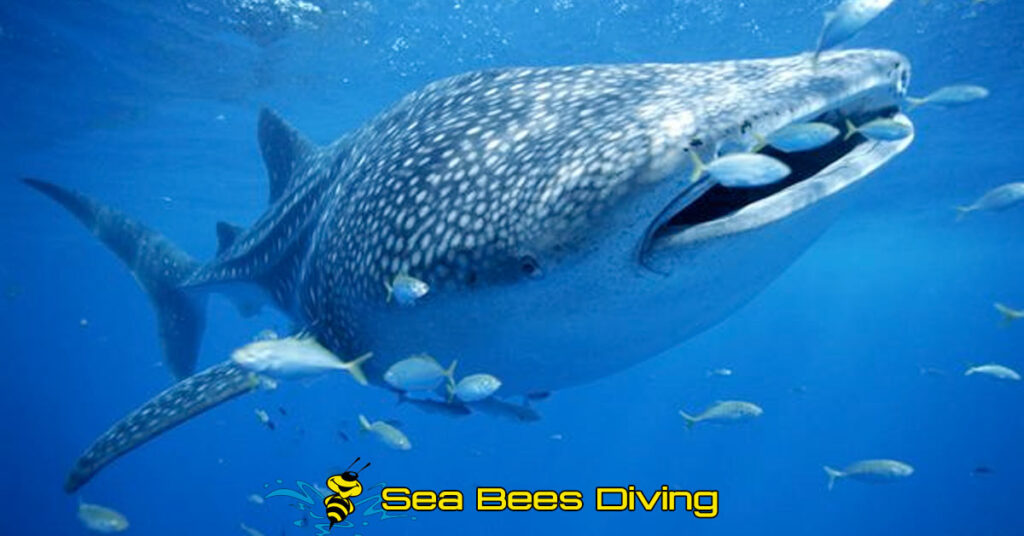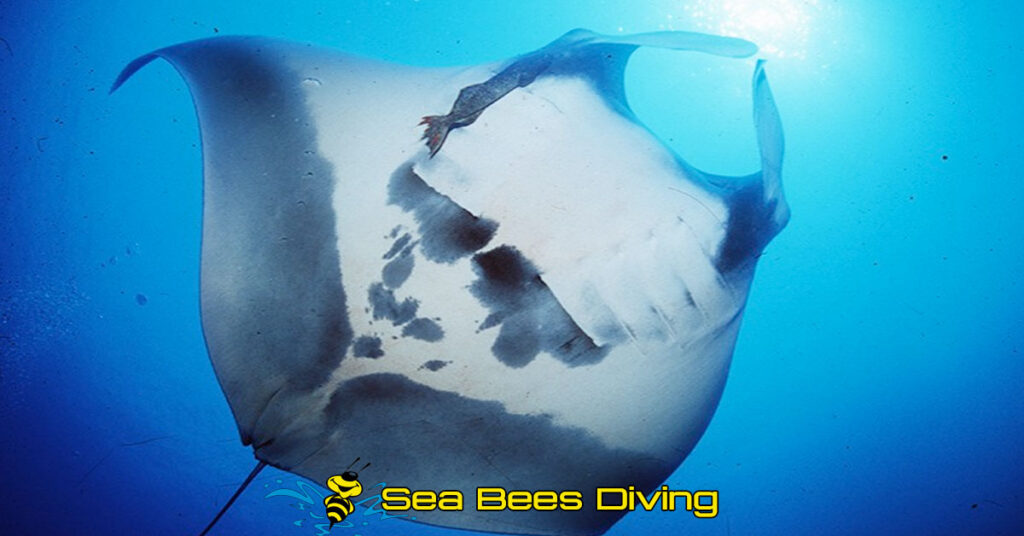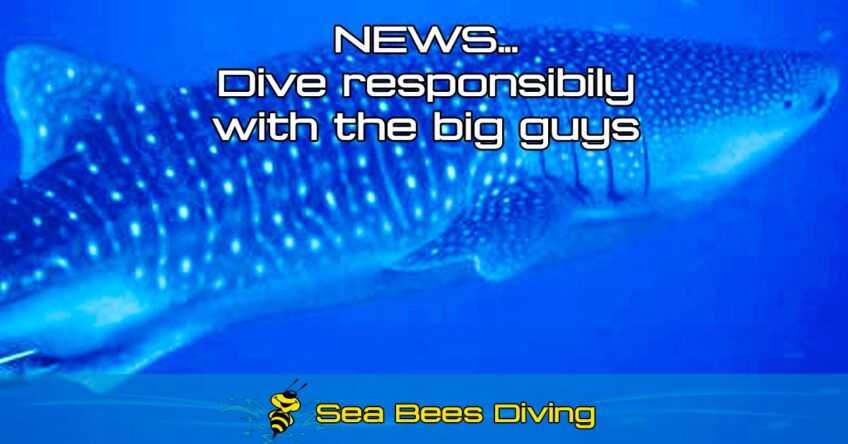Diving with Big Fish in Thailand is a dream of many scuba divers
Whale sharks and manta rays…deep down we all want to see one of these beautiful giants at some point in our diving life. So enormous yet utterly harmless, having an encounter with such an animal is unforgettable for anyone and everyone. Here in Thailand you have a chance to experience this. Your chances depend heavily on the location and time of the year, so with a bit of careful planning you can help your luck significantly. However,when diving with these creatures you also have a to adhere to a certain level of responsibility and respect!
While diving out of Phuket leaves your chances significantly slimmer than out of Khao Lak, manta ray sightings off of the south of Koh Racha Noi do occur. Particularly between the start of December and the end of January, East Coast Bay, Maritta’s Rock and The Plateau (also called the South Tip) are dive sites where Manta rays fly by for a few minutes or even do a few circles over our heads!
Out of Khao Lak, from January until the end of March or even the beginning of April, chances are high to have manta encounters of up to 45 minutes at Koh Bon and Koh Tachai. Sometimes they circle down to the northern parts of the Similan Islands.
Out of the 22 dives that we do from our liveaboard, the MV Marco Polo, up to six dives are at these manta hot spots. During the peak of the manta season, it is possible to have encounters on all these dives! Whale shark sightings are far less predictable, but during the peak time for mantas they make their appearances on the same dive sites and both further south into the Similans and north up to Richelieu Rock. The Boonsung Wreck off the coast of Khao Lak does tend to claim the prize for the most whale shark sightings every season!
Now, as will be heard during any dive briefing at these sites, there is a code of conduct to follow when diving with mantas or whale sharks. A diver breaching this code because of sheer excitement or simple carelessness is something that affects everyone involved…everyone meaning the manta or whale shark and the other divers.

How do you properly dive with one of these gentle giants?
It is extremely simple, though understandably difficult to stick to if it’s your first time. It is your responsibility to give them space and time to approach you, if they choose to do so.
When a manta appears, stay close whichever medium you are diving on. Whether this is a sandy bottom, around a cleaning station, a ridge or pinnacle, stick to it and let them approach. If you are directly on top of a cleaning station, get clear of this slowly so as not to disturb them if they are coming in for a good scrubbing.
These naturally inquisitive marvels can even be described as playful. If they are not feeding or cleaning there is a good chance they will swoop down to have a look. If just one diver goes up to chase or even try to touch a manta or whale shark, it will take more distance or shy away altogether.
This both ruins the encounter for all other divers and, more importantly, stresses out the animal. If this occurs on a large scale from more groups, over a long period of time, it has the potential to disturb their long term habits entirely.
That very important fact makes it crucial that you as a diver hold these animals in high regard. Respecting and giving them adequate space and time serves the dual purpose of allowing them their natural habits and ultimately giving you more time and enjoyment with them! Allow them to approach you and they will reward you for it!



